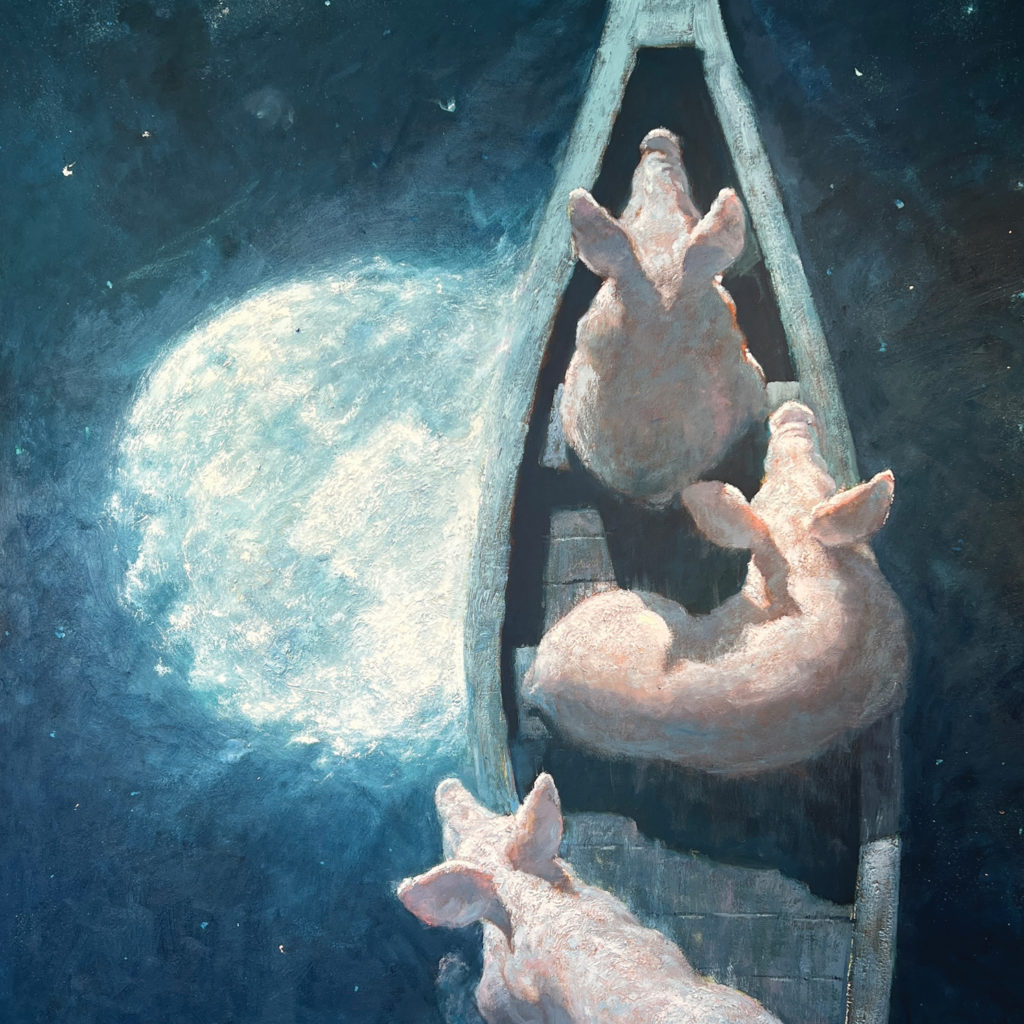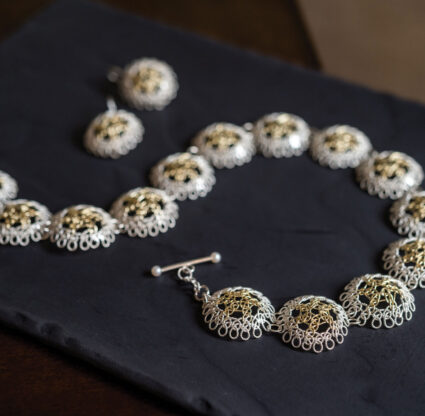In Antoine de Saint-Exupéry’s beloved children’s book The Little Prince, the fox imparts: “What is essential is invisible to the eye.” Eighty years later, Cuban-born, Miami-based artist Reynier Llanes repurposed the words as the title for a month-long solo show of his contemporary, impressionist paintings at Harmon-Meek Gallery in Naples. In What is Essential is Invisible to the Eye, Reynier maximizes his emotive brushstrokes and Kodachrome palette to paint figures and animals in enigmatic, agrarian settings. The exhibition was organized by gallery director Kristine Meek, who took over running Harmon-Meek and Harmon-Meek|modern, with her sister, Juliana, in 2012. The duo and their father, William, who purchased the gallery in 1978, first scouted Reynier’s work at a group exhibition at Naples Art Institute (formerly the von Liebig Art Center) in 2016. Reynier’s recurring themes of childhood and innocence strongly resonate with Kristine who, like the artist, is a parent.
Reynier’s dream-like imagery consistently references relationships, from the intimate vulnerability of parenthood to broader social orders and topics like racial harmony. All the paintings in the show—from large oils to diminutive watercolors and works painted with coffee—were painted since the COVID-19 pandemic. They were first exhibited at the Butler Institute of American Art in Youngstown, Ohio, early last autumn. The Meeks brought the show to Naples, drawn to its whimsy in conveying weighty topics. The works also emphasize Reynier’s ample use of impasto, a technique that builds layers of paint into heavy textures. “He began painting in impasto recently to convey more emotion through his already dramatic works,” Kristine says. “Everyone will see different things in each of his works.” In other words, it’s up to you, the viewer, to decide what is essential in each painting. Here, Kristen shares her insights on six of the artworks on view.
Destiny (2021)
Destiny depicts three pigs crossing an inky sea in a canoe, the small boat’s dry wood almost scratchily palpable. Kristine says the painting represents unity and empowers the viewer to follow their dreams. The scene is captured from above, with each pig looking toward a destination beyond the canvas’ edge. “It’s Reynier’s story of having to cross the sea from Cuba to the United States,” she says, likening Reynier’s strong familial ties in facing adversity to the classic fable The Three Little Pigs. “Llanes’ family was this union that allowed him to make this trip, leaving all that he knew behind and opening himself to new beginnings,” she adds. The full moon’s reflection buttresses the boat, an otherworldly presence, palpable and reassuring as the pigs are illuminated by the light from above. The full moon’s glow signifies optimism and moving forward with a full heart, she adds.
Beacon of the Abyss (2022)
In Beacon of the Abyss, a blindingly white bird anchors a brown paper support. The piquant sentinel seems resolute and dependable, able to traverse the dark chasm behind it. The bird symbolizes children’s innocence, strength and resilience in an often-unfriendly world, Kristine explains. To depict the abyss, Reynier used an unconventional substitute for paint: coffee. He discovered its versatility as a pigment when he spilled some on his homework as an art student in Cuba. “He enjoys working with coffee for its varying depths of color and intensity,” Kristine says. In this painting, the material elegantly captures the abyss’ rich darkness.
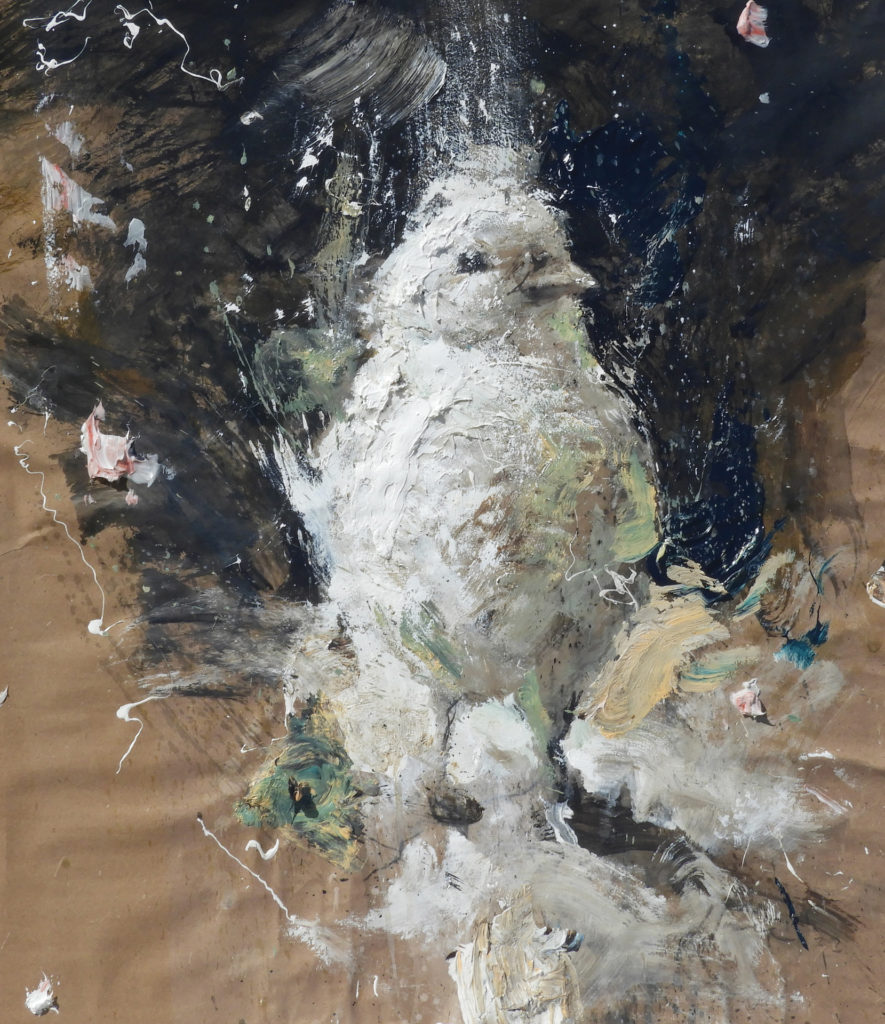
First Steps (2022)
In First Steps, a tottering lamb is gently nudged by his mother in a field awash with a shade of springtime citron shade. Reynier manipulates the field’s paint so that its texture and depth converge toward the tiny lamb in the center. Meanwhile, a father sheep stands alert and protective, safeguarding the infant and highlighting the quiet moments that shaped Reynier as a new father. “The viewer can appreciate the beautiful relationship between the lamb’s parents, offering their offspring the support to take the first steps,” Kristine says. “Looking into this piece, the feelings of pride and joy overwhelm you.”
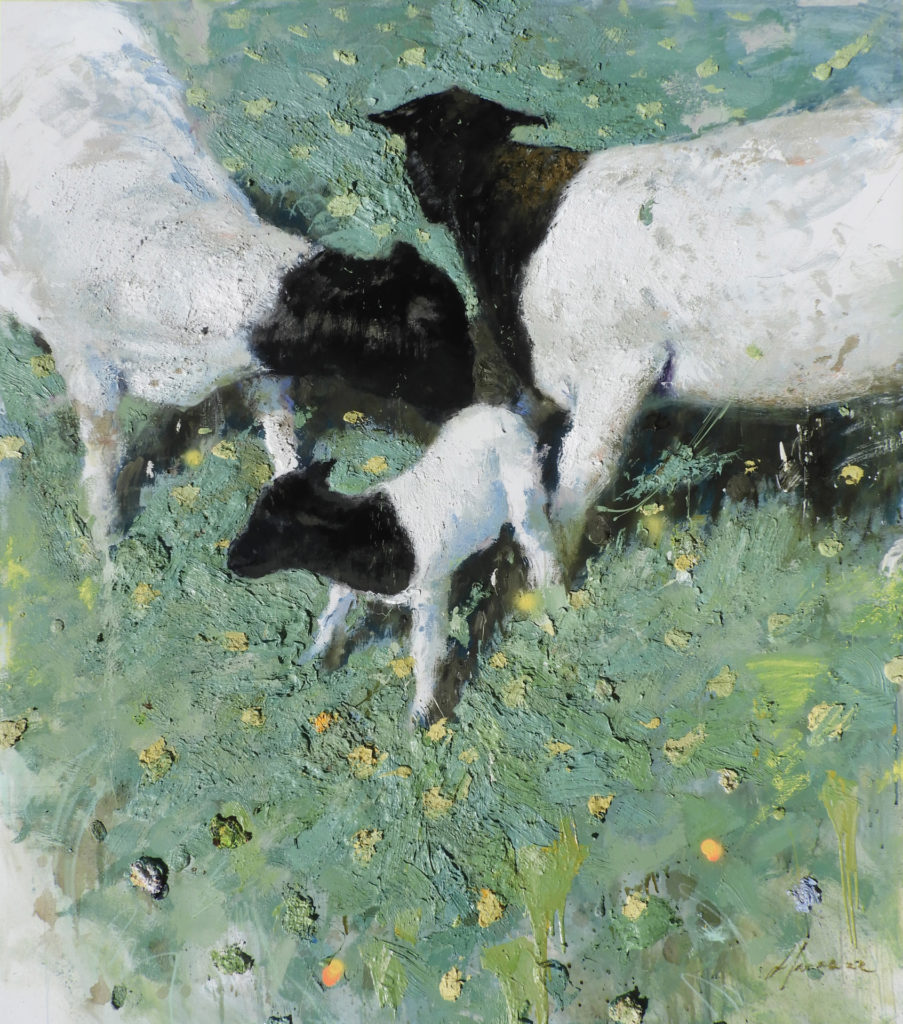
The Vow (2022)
This painting’s narrative unfolds like prose. “The Vow is a great example of how Reynier is as much a poet as he is a painter,” Kristine says, adding that the title calls attention to the intertwined hands of the subjects. The painting’s main figure, a beekeeper, moves away from a distant, white building that resembles an abbey. A second beekeeper comes in from just outside the frame, reaching in to join pink-gloved hands. Oil paint scraped into small plateaus forms the hillside into an irregular green halo around the beekeeper’s hat and veil. The suits are painted in a thick, snowy white, which, Kristine points out, is evocative of vows, trust, communication and honesty in relationships.

Prism (2022)
Seven woolly lambs nuzzle into each other, bathed in the Easter-colored hues filtered through a minuscule, abstracted prism mysteriously placed in their pasture. Prism symbolizes companionship, as the animals find solace and protection in their small herd. “I have found great enjoyment spending time with this painting,” Kristine says. “The scale allows you to become almost surrounded by the work and the prism’s warm colors.” Standing 7 feet tall and 6 feet wide, the canvas envelops viewers in the scene. “Reynier has really mastered working in all sizes—from small works, not much larger than your outstretched hand, to these massive, wall-to-ceiling works that become the flagships for his museum exhibitions.”
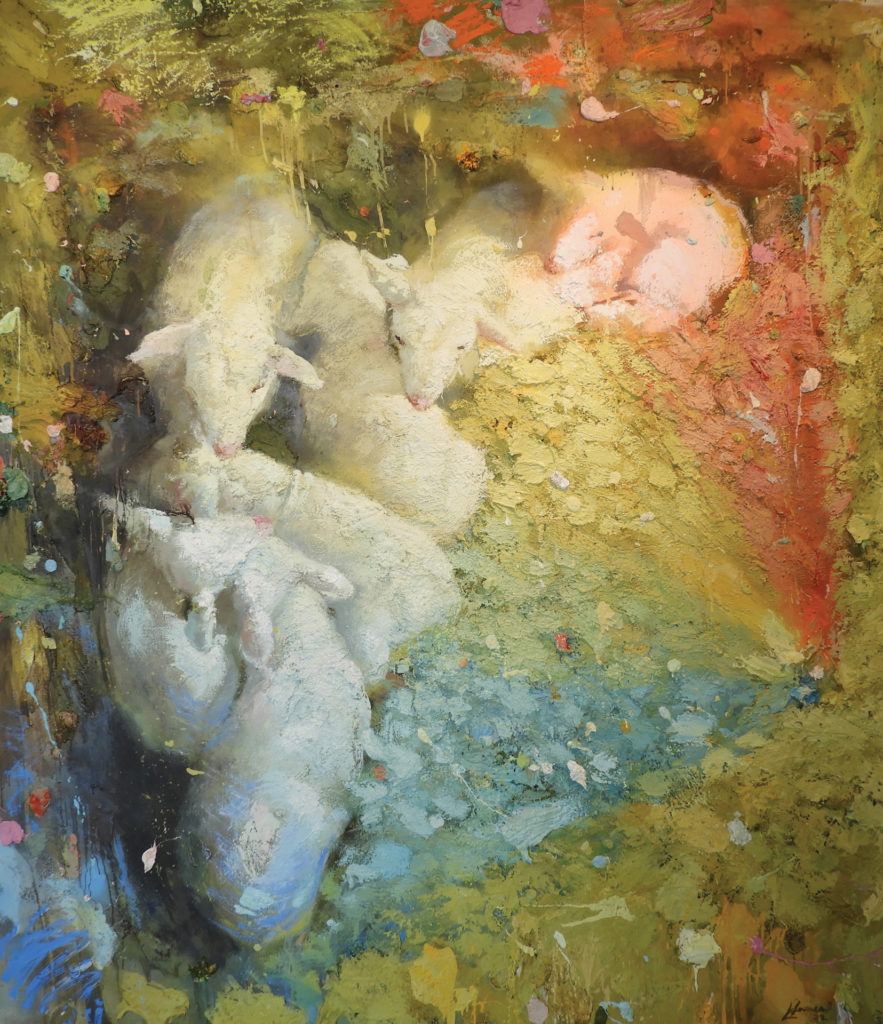
Yellow Dress (2020)
Yellow Dress, an aloof coming-of-age portrait, represents Reynier’s response to the pandemic and the Black Lives Matter movement. A young girl on the cusp of womanhood wears a baby doll dress and chic sunglasses, a whimsical reprieve from a turbulent year. Soft, muted yellows in the girl’s dress—which Reynier associates with the sun and all its vitality—contrast with the craggily painted foliage and red-and-white life preserver. Despite her optimism, the float hints at a need for security. Like many of the symbols in Reynier’s work, the life preserver, while essential, is partially hidden by greenery, almost invisible to the eye.


